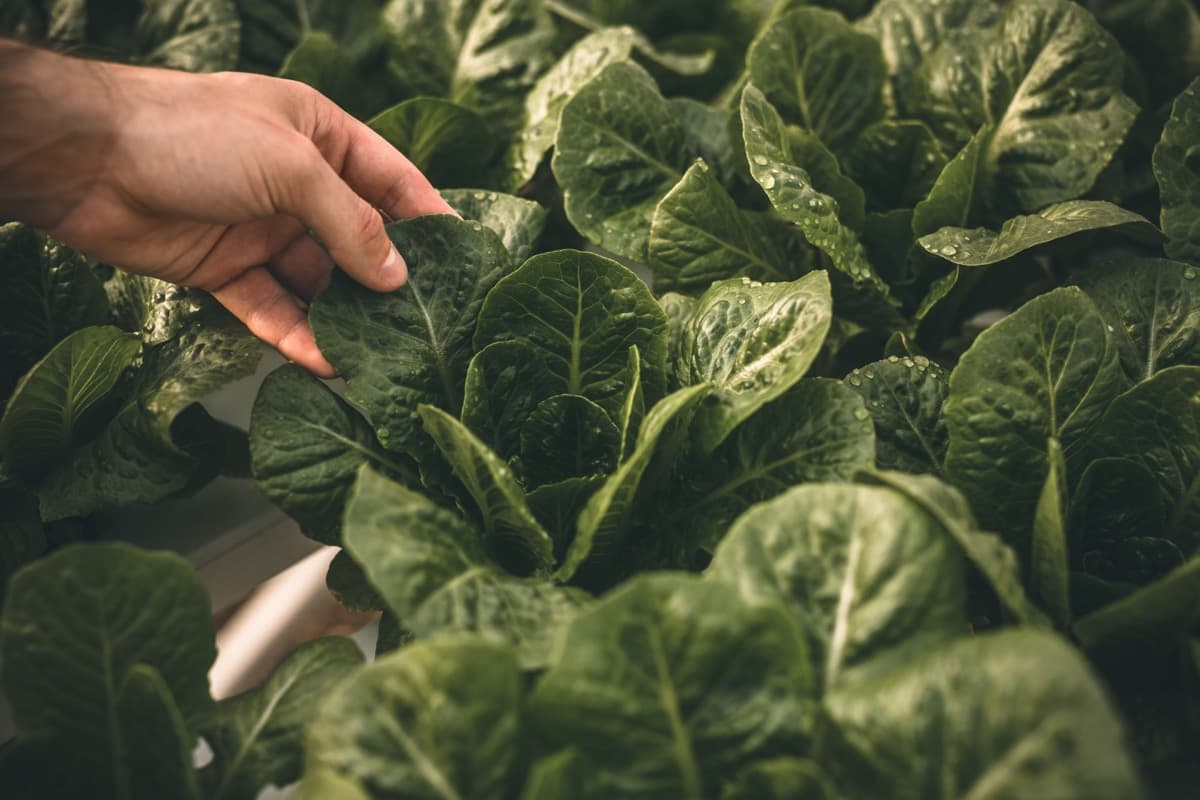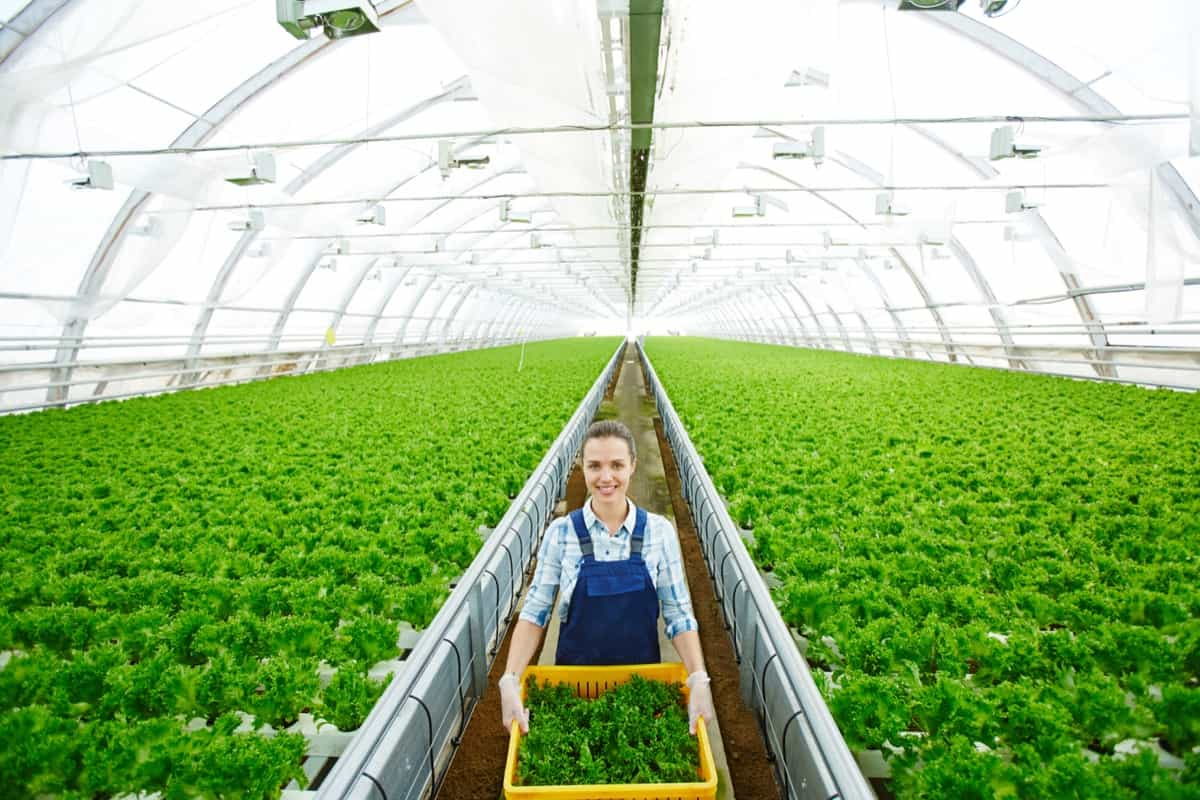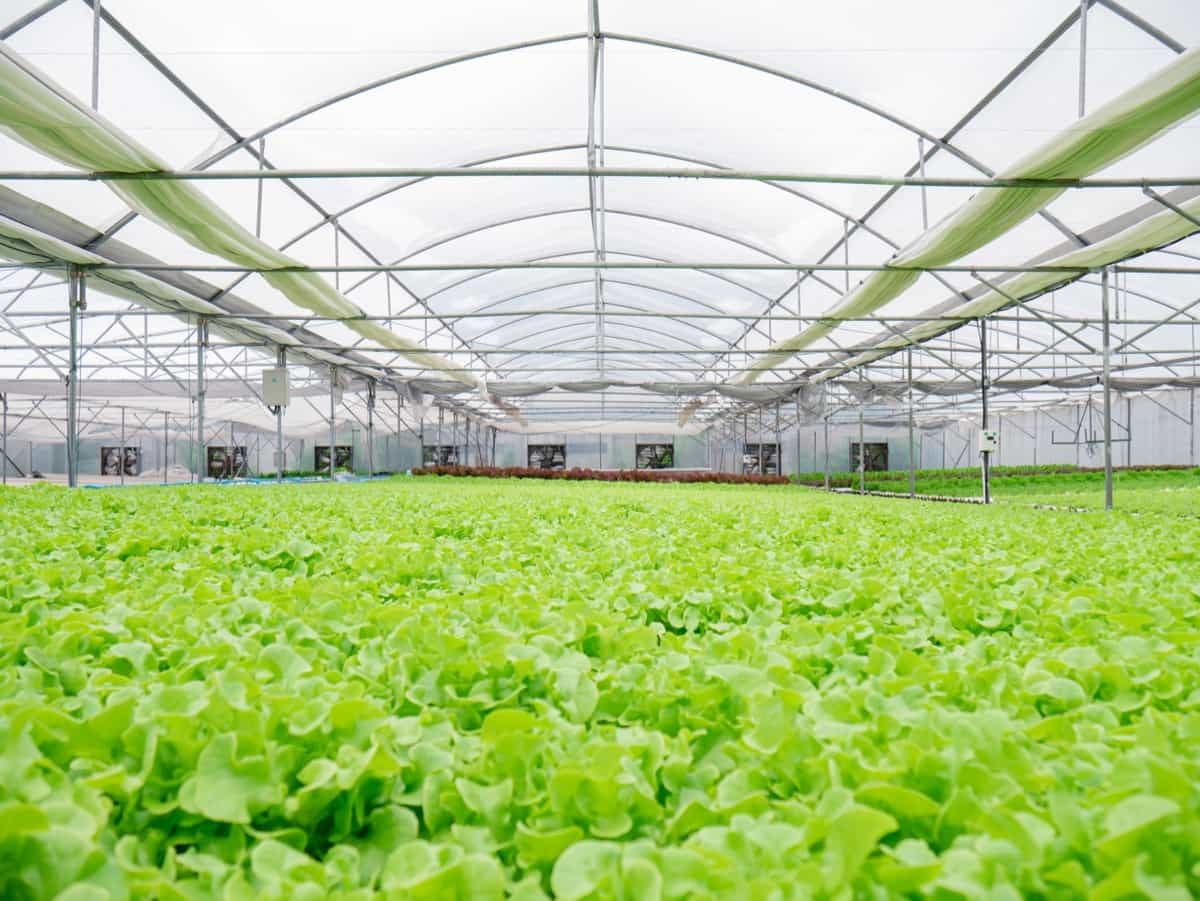The right lettuce variety can be grown in the greenhouse all year round, even though lettuce is a cool-temperature crop. It is possible to grow lettuce through the winter, even in frost-prone areas, if you have a passive solar greenhouse (no electrical heating is required). Even a greenhouse is unnecessary in some frost-free regions, but the extra protection can be useful when the weather turns cold. This cool-season crop cannot be grown in a greenhouse during the warm spring, summer, and fall months.

How to Grow Lettuce in Greenhouse
Temperature Requirements for Growing Lettuce in Greenhouse
Throughout the day, maintain a greenhouse temperature of 15-21°C. Open the doors and cool the air indoors if it becomes too hot. Temperatures should be in the evening range from 7-12°C. They can survive cold spells at 2°C, especially if protected inside your greenhouse. It is unlikely that lettuce will be destroyed by 32°C on some days, but it will be stressed. In the summer, ensure that the soil is moistened and that sufficient cool air is distributed.
Soil Requirements for Growing Lettuce in Greenhouse
The lettuce plant thrives in rich, loamy soil containing much organic matter. Within the first two inches of soil, you can dig fertilizer with a hand fork before planting your seedlings. The soil should be rich and well-drained, and the pH should be between 6.0 and 7.0. Ensure the soil is consistently moist, so the plants do not become stressed. Weekly sowing of lettuce seeds will ensure you have more than you need. The simplest way to increase satisfaction is to sow successively.
Sunlight Requirements for Growing Lettuce in Greenhouse
Lettuce needs a lot of daylight, and it needs it broad and uninterrupted. Ideally, your greenhouse should be located in an area with at least this amount of sunlight. In areas with heavy shading, dim light, or very short winter days, you may want to invest in a good lighting system to supplement what the sun can provide. South-exposed positions are ideal in any case.
Different Types Of Lettuce Suitable for Growing in Greenhouse
Generally, four types of lettuce are grown: romaine, butterhead, head lettuce, and loose-leaf lettuce. Every type has different needs and requirements.
Green and Red Leaf Lettuce
Beginners will find this variety the easiest to grow. Many people think green leaf lettuce and red leaf lettuce are different. In reality, both varieties are the same. Planting leaf lettuce in rows yields 2 to 3 harvests from one planting. Among the most popular cultivars are Red Sails, Tango, and Slobolt.
Romaine Lettuce
You can get tall, tight, and thick bundles of sweet letters from Romaine lettuce, also called cos. In 60 to 80 days, it can grow to 20 inches in height. It’s time to harvest it now. There are three common cultivars: Green Towers, Valley Heart, and Red-Eyes Cos.
Head Lettuce
Iceberg lettuce is another name for head lettuce. It is always a favorite of salad lovers to grow this variety of lettuce in their gardens or raised beds. After the last frost has passed, head lettuce can be planted indoors easily in spring. It is important to know that this variety requires more care than others. Since warm weather is incompatible with growing head lettuce, it should always be planted in the fall. Ithaca, Great Lakes, and Crispivo are common and great head cultivators.
In case you missed it: How to Grow Spinach in Greenhouse: A Step-by-Step Guide for Seed to Harvest

Butterhead Lettuce
The leaves of this variety are tender, and the heads are tightly folded. Its flavor is like subtle butter, so it is given this name. You will get a sweet touch to your salad when you add this variety. The middle leaves of this variety have a delicate white color. Try Eramosa, Esmeralda, or Nancy are the most common cultivars.
Sowing Lettuce Seeds
- In cell trays, seeds can be sown, and plants can be transplanted into final positions.
- The cells should be filled evenly with good-quality seed and potting compost. One seed should be sown per cell and very lightly covered.
- If using pelleted seeds, dig a hole about 0.5 cm deep in each cell, drop the pellet, and water the well to allow the seed coat to split. There is no need for the covering.
- If you keep your seeds evenly watered, it will take 4-5 days for germination to occur Seed trays should be moved to a cooler location if temperatures exceed 20 degrees.
Transplanting Lettuce seedlings
- Remove any perennial weed roots from the soil by digging over them.
- Well-rotted compost should be incorporated well before planting. The soil should be fertilized with 50-60 grams of general garden fertilizer. Rake the soil to ensure the even distribution of fertilizer.
- As soon as the seedlings have developed 4-5 true leaves and the roots have penetrated the compost, transplant them into their final position.
- To prevent lettuce plants from sitting in wet conditions in winter, plant them on the bed surface in winter. In summer, plant lettuce plants slightly deeper to ensure sufficient moisture. Organize the rows by spacing them 20cm apart and 20cm apart in length.
- Make sure the plants are evenly watered.
Watering Requirements for Growing Lettuce in Greenhouse
All stages of lettuce growth require adequate watering. The soil in the seed tray should be moistened and well-drained with a light mist of water. Using a misting system, you can automatically humidify your lettuce without producing too much moisture. Generally, provide one inch of water per week. It is beneficial to sprinkle seaweed or fish emulsion solution on seedlings immediately after transplanting. Like other greens, lettuce has shallow roots, and it develops quickly. Getting tender, luscious leaves require constant watering.
Fertilizing Requirements for Growing Lettuce in Greenhouse
Most amended beds provide lettuce’s nutrients to thrive, but some plants may need a nitrogen boost. After lettuce sprouts, organic gardeners use half-strength fish emulsion fertilizer or blood meal. In addition, 0.5 to 1 pound of prepared nitrogen fertilizer per 100 feet of row can encourage growth, particularly if the bed is not amended. Apply 1 to 2 pounds of 12-12-12 fertilizer per 100 feet of each row of lettuce as it grows to ensure it receives a balanced fertilizer.
Fertilize lettuce by side-dressing the rows when the plants reach 3 to 4 inches tall. Place 1 to 2 inches of deep groove parallel to the lettuce row, but at a distance of 4 to 6 inches. Feed the groove with fertilizer and then thoroughly water it. The diluted fertilizer will be pushed around the lettuce roots without burning them by watering. It is better to feed frequently and lightly than infrequently and heavily.
How to Harvest Lettuce Grown in Greenhouse
In the greenhouse Dome, lettuce can be harvested anytime, but outdoor lettuce should be harvested in the morning to avoid wilting. You can harvest the outer leaves of leaf lettuce as soon as they reach 6 inches, as it is a cut-and-come-again crop. You should harvest head lettuce before the head begins to elongate, as that is when it is ready to bolt, which will negatively impact its flavor.
In case you missed it: How to Start a Spice Processing Business in India: A Profitable Agri-Food Business Idea

Conclusion
Growing greenhouse lettuce is one of the easiest things you can do. The crop cycle is short, labor requirements are low, and it can be grown year-round. Greenhouse lettuce production is factory-like, producing high-quality lettuce on a consistent schedule. Unlike other crops, greenhouse leafy greens are sold by the head, not the pound. In an average 30-day crop cycle from transplant to harvest, lettuce heads weigh 150 to 200 grams.
- Ultimate Guide to Ossabaw Island Hog: Breeding, Raising, Diet, and Care
- Ultimate Guide to Juliana Pig: Raising Facts, Size, Diet, Care, and Lifespan
- Raising Lleyn Sheep: Disadvantages, Price, Uses, Characteristics, and Care
- Ultimate Guide to Meishan Pig: Breed Facts, Breeding, Raising, and Care
- Ultimate Guide to Teacup Pigs: Raising, Diet, Lifespan, Cost, and Care
- Guide to Raising Poll Dorset Sheep: Facts, Profile, Characteristics, Uses, and Care
- Ultimate Guide to Bighorn Sheep: Characteristics, Diet, Lifespan, Breeding, and Lifecycle
- Ultimate Guide to Raising Katahdin Sheep: Farming Facts, Breed Profile, Uses, and Care
- Ultimate Guide to Raising Oreo Cows: Belted Galloways Farming Facts, Profile, Uses, and Care